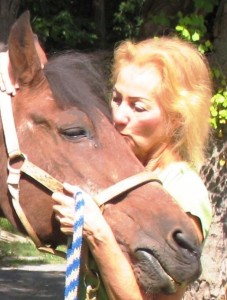President’s Message:
DEC Makes Big Money from Deer Hunting

Now that deer hunting season is at a close, I feel compelled to correct some misinformation that I hear every year, such as, “If we didn’t hunt, we’d be overrun with deer.” These claims, although heavily promoted, are false. Hunting actually creates a surplus of deer due to the deliberate manipulation of deer populations by the Dept. of Environmental Conservation (DEC).
How is this done? By regulating hunting so that most of the deer killed are bucks. Let’s say that we have an unhunted herd of deer consisting of 200 deer — 100 does and 100 bucks, the ratio that would most naturally occur in nature Contrast that with a hunted herd using a “buck-only hunting policy” that also has 200 deer — 180 does and 20 bucks. Given the same food conditions, the first herd will produce 100 fawns resulting in a total of 300 deer, and the second herd will produce 180 fawns, resulting in 380 deer, thus each year increasing the size of the herd that is hunted.
Ideally, for the hunters, if the desired number of bucks and does are taken each year, the herd will be composed of the lowest number of males and highest number of breeding females. Reducing the number of bucks in the fall provides more food for the pregnant does, allowing them to survive and give birth to more fawns than they would normally. As a result, a maximum fawn crop will be produced each year, resulting in an increased sale of hunting licenses.
In other words, hunting produces a temporary — and drastic — decrease of deer for only a few months, resulting in the explosion in the deer population with the birth of fawns in the spring.
Additionally, due to hunting, the average age of male deer in the southern zone of New York is a mere 1½ years, compared to the full life expectancy of almost 11 years. While non-human predators kill only the weakest, human hunters ruin the deer gene pool by killing the strongest and healthiest of the population, thus making the herd more prone to diseases and starvation.
When bows and arrows are used, almost half the deer hit are not killed. They “escape” to die of crippling wounds and painful infections over a number of weeks.
When hunting season opens and guns fire, deer panic and run, paying no attention to where they are going, and as a result, deer/car collisions soar. I have heard hunters argue that the deer are running because they are in rut. That may be partially true; however, a few years ago in Delmar, NY, during hunting season a deer crashed through the window of a house, severely injuring a woman inside. Around that same time, several deer jumped off a bridge in the Albany area. It seems that both of these situations resulted from panic — not a desire to mate.
Hunting pressure has resulted in a constant desire for the eradication of natural predators. A few years ago, the hunters lobbied heavily for year-round killing of coyotes because the coyotes were “taking too many deer.” Of course, this could not be proven and the six-month coyote hunting period remained. Now, the reintroduction of the wolf in the Adirondacks is a new threat to hunting interests.
It’s too bad that these natural predators can’t purchase a hunting license. After all, I believe that’s really what it’s all about for the DEC and businesses who cater to hunters…….the almighty dollar.
Susan C. McDonough
President
New York State Humane Association Humane Review, Vol.XII, No.4, Winter 1998.